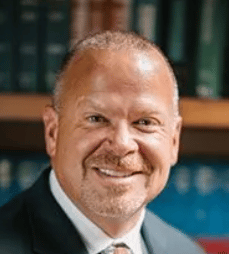If you or someone you care for is injured in an accident, immediate medical attention is essential. A specialist is best able to assess the seriousness of the injury or injuries and determine a series of steps for you to take in the form of a treatment plan designed for your recovery and the best long-term results. If injuries were serious, an immediate hospital visit was no doubt required, and most likely, hospitalization.
Please remember, when an injury first occurs, you or your injury attorney should contact your health insurance company to inquire about any requirements they may have you meet to approve the care provided by a specialist (for example, In- or Out- of Network or referral requirements). Then, you should seek medical treatment without delay. The most important thing is for you or your loved one to heal, which is best achieved by following the prescribed treatment plan from your health care provider. Catastrophic injuries can take a long time to heal, and permanent damage/health conditions can be a result.
The healing process
Here we discuss some of the types of care and practitioners that will be involved in your recovery over time. This is after the initial hospital stay and any emergency treatments or surgery that had to be performed. As time passes, chiropractors and physical therapists will be part of your healing regimen. Most likely, an MRI will be performed. All of the doctors involved in your case will collectively recommend your long-term treatment and rehabilitation plan.
About Chiropractic Rehabilitation
A doctor of chiropractic medicine, or Chiropractor, specializes in skeletal and muscle damage, and issues with the spine, back, neck and shoulders. A Chiropractor is involved in the restoration of proper joint function of the spine or extremities, and the strengthening of supporting muscles and soft tissues. This will usually involve specific spinal adjustments, combined with a program of stretching, resistance training, and exercises to improve muscle tone. Some of the benefits of appropriate Chiropractic treatment include:
- Pain relief of headaches, neck pain and lower back discomfort or pain.
- Increase in range of motion of the spine and extremities.
- Improved nerve function and immune system.
- Correction of structural abnormalities through proper x-ray interpretation and treatments.
Without some form of rehabilitation, recovery from an injury or a long-standing spinal problem can take longer to achieve. Overlooking the importance of improved range of motion and muscle strengthening can result in a relapse, with your original health problem returning again and again. It is common for some patients to receive a set of simple exercises or “maneuvers” to do at home even after the more intense treatment period ends. This is for long-term maintenance or pain management. Other types of injuries will require the use of specialized equipment to isolate and strengthen specific areas of the spine.
Physical therapy
The main goal of physical therapy is to help the patient improve or maintain the strength and flexibility of the muscles. Physical therapists have many tools at their disposal for managing pain, including:
- Nerve stimulation: Also known as transcutaneous electrical nerve stimulation (TENS). This treatment involves attaching electrodes to the skin to run electrical currents through the muscle(s) in pain, which is believed to help alleviate stiffness and increase mobility.
- Ultrasound: Is the use of a series of high-frequency sound waves that are directed toward a specific part of the body to generate soothing heat via internal vibrations.
- Applications of heat and/or cold compressors: Heat is applied to various areas of the body to increase blood flow and help alleviate muscle spasms, while cold (ice) compressors are used because they slow down blood flow and reduce swelling.
- Massage: Therapeutic massage is typically included in every treatment plan, including the use of stronger pressure, deep-tissue massage. It helps to release chronic muscle tension and pain and ultimately results in pain relief but is not a stand-alone cure or resolution for what is actually causing the chronic problem of pain or limited mobility. Massage is used to supplement long term pain relief and healing.
- Traction: Is the process of stretching the spine, either by hand or machine, and can help improve mobility and reduce pain.
After some time, if the traditional, conventional treatment that includes physical therapy and / or chiropractic care for pain is not enough to manage chronic problems, a physician might present surgery as an option for consideration. This may be a minimally invasive outpatient procedure or a surgical procedure that is more serious and involved. Medical professionals will review your MRI (or CT scan) to determine if you are a candidate for certain procedures and outline or describe them for your understanding of the potential results in terms of risks and benefits. Always ask about the success rates and the potential for negative outcomes before you make a final decision to pursue a surgical procedure.
At the end of the day, each person’s body and injuries are different. Your injury attorney and physicians will explain your options and help guide you through your recovery process.

Attorney Bryan E. Delius was born and raised in Sevier County, TN. He founded Delius & McKenzie more than 20 years ago, after receiving his JD from the University of Tennessee at Knoxville. He is admitted in Tennessee and in several federal court systems. Learn more about Bryan E. Delius.




